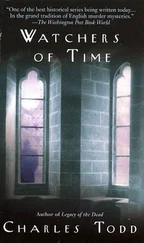Alexander Todd - A Time to Remember
Здесь есть возможность читать онлайн «Alexander Todd - A Time to Remember» весь текст электронной книги совершенно бесплатно (целиком полную версию без сокращений). В некоторых случаях можно слушать аудио, скачать через торрент в формате fb2 и присутствует краткое содержание. Город: Cambridge, Год выпуска: 1983, ISBN: 1983, Издательство: Cambridge University Press, Жанр: Химия, Биографии и Мемуары, на английском языке. Описание произведения, (предисловие) а так же отзывы посетителей доступны на портале библиотеки ЛибКат.
- Название:A Time to Remember
- Автор:
- Издательство:Cambridge University Press
- Жанр:
- Год:1983
- Город:Cambridge
- ISBN:0 521 25593 7
- Рейтинг книги:3 / 5. Голосов: 1
-
Избранное:Добавить в избранное
- Отзывы:
-
Ваша оценка:
- 60
- 1
- 2
- 3
- 4
- 5
A Time to Remember: краткое содержание, описание и аннотация
Предлагаем к чтению аннотацию, описание, краткое содержание или предисловие (зависит от того, что написал сам автор книги «A Time to Remember»). Если вы не нашли необходимую информацию о книге — напишите в комментариях, мы постараемся отыскать её.
A Time to Remember — читать онлайн бесплатно полную книгу (весь текст) целиком
Ниже представлен текст книги, разбитый по страницам. Система сохранения места последней прочитанной страницы, позволяет с удобством читать онлайн бесплатно книгу «A Time to Remember», без необходимости каждый раз заново искать на чём Вы остановились. Поставьте закладку, и сможете в любой момент перейти на страницу, на которой закончили чтение.
Интервал:
Закладка:
I have referred to the daunting nature of chemical studies in the nucleotide/nucleic acid field. At the time of which I am writing, and, indeed, throughout virtually all the work on nucleic acid components - and even on the basic purines and pyrimidines let alone their phosphorylated derivatives - poor solubility in organic solvents, difficulty of separation and purification, and lack of proper melting points or other reliable criteria of purity, made life very difficult for the chemist, and led to a lot of confusion and, indeed, errors in the literature. In those days we had only the early forms of chromatography available, and, apart from ultraviolet spectroscopy, and in the late stages of our work some minor applications of the newly developing technique of infra-red spectroscopy, we had to rely on the traditional methods of the organic chemist developed many years before for compounds quite different in type and in physical properties. Even in our own work we were led by such deficiencies into errors in the identification of simple nucleotides, at one point, by accepting the wholly invalid 'proof of the structure of benzylidene-adenosine due to Gulland, and had to do quite a bit of work before we realised the true position. As we went along several observations began to loom large in our thoughts. For one thing, we were struck by the astonishing difference in the ease with which RNA underwent hydrolysis as compared with DNA and probably related to this the ease with which one could purify deoxyribonucleotides as compared with ribonucleotides. To get a really pure specimen of yeast adenylic acid (adenosine 3'-phosphate) was a very difficult task indeed, since recrystallisation seemed often to operate in the reverse direction; this should have suggested phosphate migration to us as a possible reason, but I am afraid it did not immediately do so. What was, of course, clear, was that the difference between the stability of the two nucleic acids lay in the sugar portion of the molecule, and this also suggested to me that, while the stable DNA was involved in hereditary transmission, RNA probably had some quite different function in nature, where its impermanence would be an advantage. As far as we were concerned the final breakthrough came in 1949 when Waldo Cohn at Oak Ridge, Tennessee, applied ion-exchange chromatography to alkaline hydrolysates of yeast ribonucleic acid, and isolated, not just the nucleoside 3'-phosphates hitherto regarded on the basis of studies by Levene and others as the sole products, but also the 2'-phosphates. In Cambridge my colleague D. M. Brown drew my attention to some earlier and virtually unnoticed work by Fono on the hydrolysis of glycerophosphates, and suddenly the whole jigsaw fell into place, and we could explain all the hitherto puzzling facts about RNA and understand fully the differences in chemical behaviour between RNA and DNA. Moreover, we were able to establish conclusively by synthetic studies the reality of the alkaline degradation of RNA, first to four cyclic nucleotides and thence to an equilibrium mixture of the 2'- and 3'-phosphates, which undergo interconversion in an acid medium, and we were able to explain the nature of ribonuclease action and its significance for RNA structure. Having done this, Dan Brown and I were able to put forward definitive structures for the two types of nucleic acid as unbranched 3:5-linked polynucleotides in 1951 at the 75th Anniversary Meeting of the American Chemical Society (our detailed paper did not actually appear in print in the Journal of the Chemical Society until January 1952).
It was now clear that both types of nucleic acids were unbranched linear 3': 5'-linked polynucleotides, and that individual members differed from one another in molecular size and in the sequence of nucleotides present in them. Accordingly, methods both for synthesis and for sequence determination would in due course become important. We did indeed carry out some work on stepwise degradation of polynucleotides by chemical means, but it quickly became clear that such methods would be tedious in the extreme, and probably inaccurate. It seemed to me that little real progress was likely to be made until enzymes could be found which would chop up polynucleotide chains in a manner analogous to the specific enzymes which were known to attack polypeptides, and which were being used with such success in the case of insulin and other proteins by F. Sanger. Very few nucleotidases of such a nature were known at this time, and it seemed to me wisest to leave the further development of sequence determination to men like Fred Sanger, or to one of the numerous young men who were going out from my laboratory to build up new research groups in the nucleotide field in many countries. On the side of synthesis A. M. Michelson and I showed that the synthesis of oligonucleotides was quite feasible by synthesising dithymidine-3':5'-dinucleotide. I confess that I have never been much attracted to the kind of repetitive procedures involved in synthesising either polynucleotides or polypeptides, so I left further developments in synthesis to my 'offspring' including such men as A. M. Michelson, F. Cramer, H. G. Khorana and C. B. Reese. The spectactular results which later emerged culminating in Khorana's synthesis of a gene are well known. There still remain serious problems to be solved, however, even in the oligonucleotide field; especially is this true of the ribonucleotides, where the presence of cis-vicinal hydroxyl groups in the ribose residue presents a difficult problem for the synthetic chemist.
In the course of our studies on methods for the phosphorylation of nucleosides (i.e. nucleotide synthesis) we developed and used as the method of choice what has come to be known as the 'triester procedure', i.e. one in which one uses an active diester of, for example, phosphorochloridic acid as phosphorylating agent and subsequently removes selectively one or two ester groups from the resulting triester to give either a di-or a monoester of phosphoric acid. Although demonstrated by us to give good results in synthesising a dinucleotide, it appeared for some years to be superseded by other quicker but less selective routes based on direct diester formation. I find it sometimes a little difficult not to say 'I told you so!' when I see the triester procedure now being belatedly adopted for oligonucleotide syntheses as the method of choice where selectivity as well as yield is of importance.
The double helical conformation of DNA was advanced by Watson and Crick about two years after our clarification of the chemical structure which made it possible. I and my colleagues played no part in the development of the Watson-Crick model, largely because our interests at the time were essentially chemical and we really gave little thought to the physical conformation of the polynucleotide molecules in nature. A secondary reason may have been the almost total lack of contact between physics and chemistry in Cambridge - a lack of contact which is all too common in universities. It is true that before Watson and Crick were allowed to publish their paper Sir Lawrence Bragg, who was head of the Cavendish Laboratory, insisted that D. M. Brown and I should approve their model (which we did!). The reason for this insistence (which is mentioned in Watson's book The Double Helix but with no explanation) lay in the fact that only a year or two earlier Pauling had published the alpha-helical structure for a protein. Pauling sent copies of his manuscript both to Bragg and myself, and I well remember Bragg coming over to see me in the chemical laboratory (for the first time since my arrival in Cambridge) and asking me how Pauling could have chosen the alpha-helix from among three structures all equally possible on the basis of X-ray evidence, and all of which he (Bragg) had indicated in a paper with Perutz and Kendrew. He was quite shattered when I pointed out that any competent organic chemist, given the X-ray evidence, would unhesitatingly have chosen the alpha-helix. It was a direct consequence of this that he decided that no nucleic acid structure based on X-ray evidence would go out from his laboratory without it first being approved by me!
Читать дальшеИнтервал:
Закладка:
Похожие книги на «A Time to Remember»
Представляем Вашему вниманию похожие книги на «A Time to Remember» списком для выбора. Мы отобрали схожую по названию и смыслу литературу в надежде предоставить читателям больше вариантов отыскать новые, интересные, ещё непрочитанные произведения.
Обсуждение, отзывы о книге «A Time to Remember» и просто собственные мнения читателей. Оставьте ваши комментарии, напишите, что Вы думаете о произведении, его смысле или главных героях. Укажите что конкретно понравилось, а что нет, и почему Вы так считаете.










